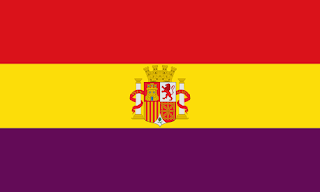Yes, I know I haven’t posted in several weeks. I haven’t felt like writing. No Surprise when you spend 8 hours a day in front of a computer screen, of course that doesn’t mean the pick-ups have slowed down. Recently, I thought about how to branch out in an interesting manner since SPCW items are not always easy to find that meet my needs. I am some what fascinated by Alfonso XIII, the last Spanish king, and I was trolling the online auction house that starts with an E and came across a unused post card for the whopping price of $3 free shipping. Sold, so what was the post card that tweaked my interest? Well I could have done some research before I purchased but for $3 it was worth picking up then figuring out what the subject is.

Francisco Ferrer, you may have asked yourself from time to time who was Francisco Ferrer? Probably not, but he was a big thing in the first decade of the 20th century among the radical clique. Wiki tells us a lot about him. He was born on January 10, 1859 on a farm near Barcelona. Though his parents were very dedicated Catholics he became an anti-clerical radical free thinker and rejected his parents religion. He was active in radical actions and supporting the Republican movement, which in 1885 led him to take part in a failed Republican uprising, which forced him in to exile in France for 16 years. He then began to explore anarchism, which led him to open a libertarian school when he returned to Spain in 1901. This school was the Escuela Moderna in Barcelona.

The Escuela Moderna’s curriculum was an alternative to the religious schools, which had a monopoly on education. The school taught new scientific, historical, and sociological content not offered elsewhere. In 1901 when the school opened there were more than 30 students and when the Spanish government closed the school in 1906 there were more than 126. The school charged based on parent’s ability to pay, and the school-rejected rewards and punishments-no grades no exams and students planned their own work and there was no attendance tracked.
I am not going much into his politics but it will suffice to say that he received no break from the policeria and his home was often raided and he was generally hassled. He was a threat to the government, the church, and the military-the trifecta.
In 1906 there was an assassination attempt on Alfonso XIII but the actual waanabee assassin was an anarchist that had worked at the school. As a result he was in prison until 1907 when international pressure forced his release. Fast forward to August 1909 when he was rearrested for “participation” in the “Tragic Week “ uprising Barcelona.
Unfortunately, Francisco would be executed on October 13, 1909, as a result supposedly his last words before the firing squad killed him was "Aim well, my friends. You are not responsible. I am innocent. Long live the Modern School!"
OK, now we are getting there-but it wouldn’t make any sense to explain the postcard without the background.
The postcard is brown and portrays a Spanish priest and a Spanish officer marching over two bodies one of which is Liberty. At the top is says “The Masters of Spain Sabre et Goupillon Dios, Patria, y Rey (Early Spanglish). I translated Goupillon and it means bottlebrush in French-perhaps a reference to the mustache.
At the bottom is says “Liberty Under Foot in Spain by Church and State” with various military and church items.
At the bottom it has “Published by Francisco Ferrer Ass’n 242 5th Ave, New York” (Google Earth gives us the address as it is now) and the reverse is standard and has no relevant text.
So I searched for this association. The association was founded in NY in 1910 as a reaction to his execution the year before. The association was founded by anarchists and was headquartered at the Ferrer Center and it also contained a school. In 1914 the school, or as then known as the Ferrer Colony, moved to Stelton, NJ.









































